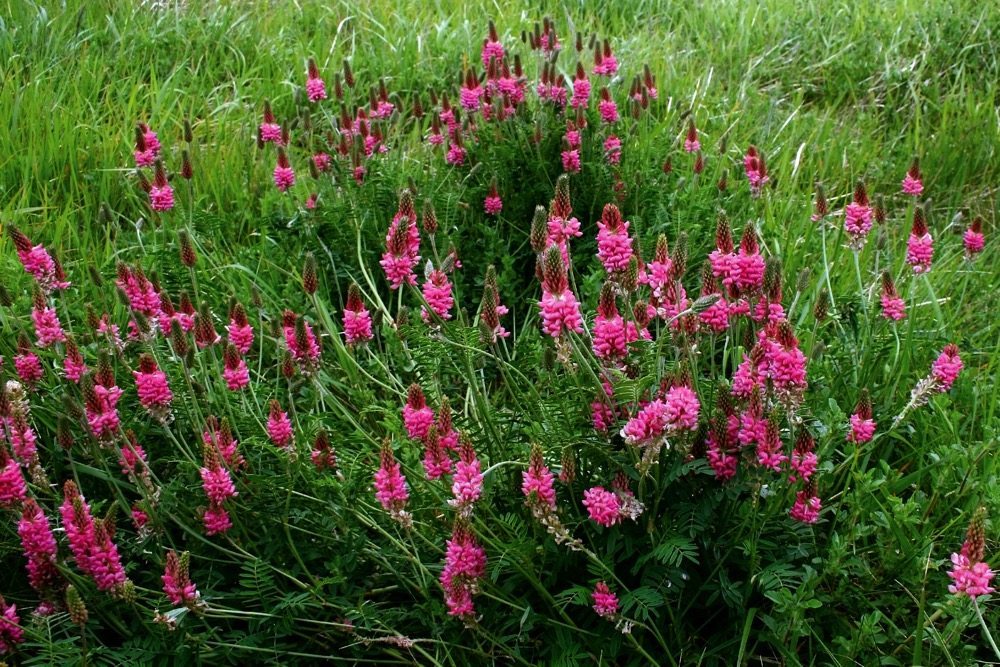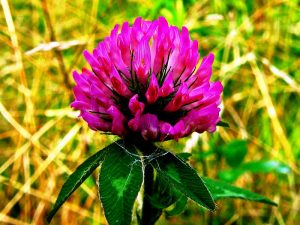Sainfoin: a new forage legume for livestock producers, soil regeneration and for honey production. For sale in small amounts from Amazon but make sure they are rhizobial bacteria inoculated for better germination. This seller I am not sure about.

Sainfoin honey, is a of floral honey made from the nectar and pollen of Onobrychis viciifolia blossoms, a flowering plant in the legume or beans family, resembling clover and has the silage similarity to alfalfa
Most pollinators such as bumblebees and honey bees source the plant for nectar and pollen.
Given the proper and NON-ACIDIC soil type planting this legume produces a light honey with a mild sweet taste making it a great honey for teas as it does not overwhelm the taste of the beverage. It is also a light honey in regards to constituency.
It has also been suggested that there are antibacterial effects as well as anti-inflammatory effects. My take on that is that anything that may be passed on to the secondary consumer (humans) may also have antimicrobial effects to the bees in the hive.
Before I go into the harvest characteristics, silage or forage reasons for its planting (read Montana and the great plains where it is catching on I will give a few links about soil types as it does NOT like acidic or wet soils. Personally I think many of the Sequim Dungeness soils would support this plant well.
It is important to match whatever cover crop you intend to plant with the soil types you have. Sainfoin is a health-giving legume generally intended for alkaline soils. It is a drought resistant deep rooted plant that needs on nitrogen fertilizer. Unlike Alfalfa it does not cause bloat. Considering that fertilizer is expensive this honey producing field crop can be a great benefit to the local farmer and to the beekeeper.
REMEMBER: is not suitable for moisture-retentive or acidic ground. Sainfoin will live up to five years or more and having a long tap root makes it drought resistant, another reason it should be planted in the limited rainfall area of the Sequim area.
A few links and comments to SOIL TYPES: The first link is to the WA state Soil Survey of Clallam County. Every landowner should download the pdf or purchase the book from the state.
By example: The Clallam series of soils (See the Clallam county WA Soil Survey.) The Hoypus series -the Agnew, Cassolary, Whidbey, Dick, LaConner, and the competing Carlsborg soils. Agnew and Cassolary soils are very deep and acidic.
Most Sequim soil types are only slightly acid or neutral. Carlsborg soils are slightly acid (pH 6.2) Dungeness silt loam soils are also is slightly acid or neutral. So are the Lummi series (near the straits in Dungeness are slightly acid.) Probably, in the Nashes farm area. IMO, if you can grow alfalfa you can grow Sainfoin.
In summation this cover crop once established is low input and as a legume the rhizobial bacteria that live on its root nodules fix free nitrogen from the air and make it ready as a nutrient to the sainfoin and to other surrounding plants such as your orchard.
COVER crops also provide other benifits: Mycorrhiza’s are also often present which increase the sequestration of other mineral nutrients including the essential phosphates. Technically the only other fertilizer you may need to add may be Potash and yearly liming.
For the beekeeper seeking to improve his orchard this is a win, win addition as sainfoin attracts ten time more bees than white clover. 
The honey does not granulate as doe’s white clover and in many ways is considered to be superior or at least the equal of white clover.
